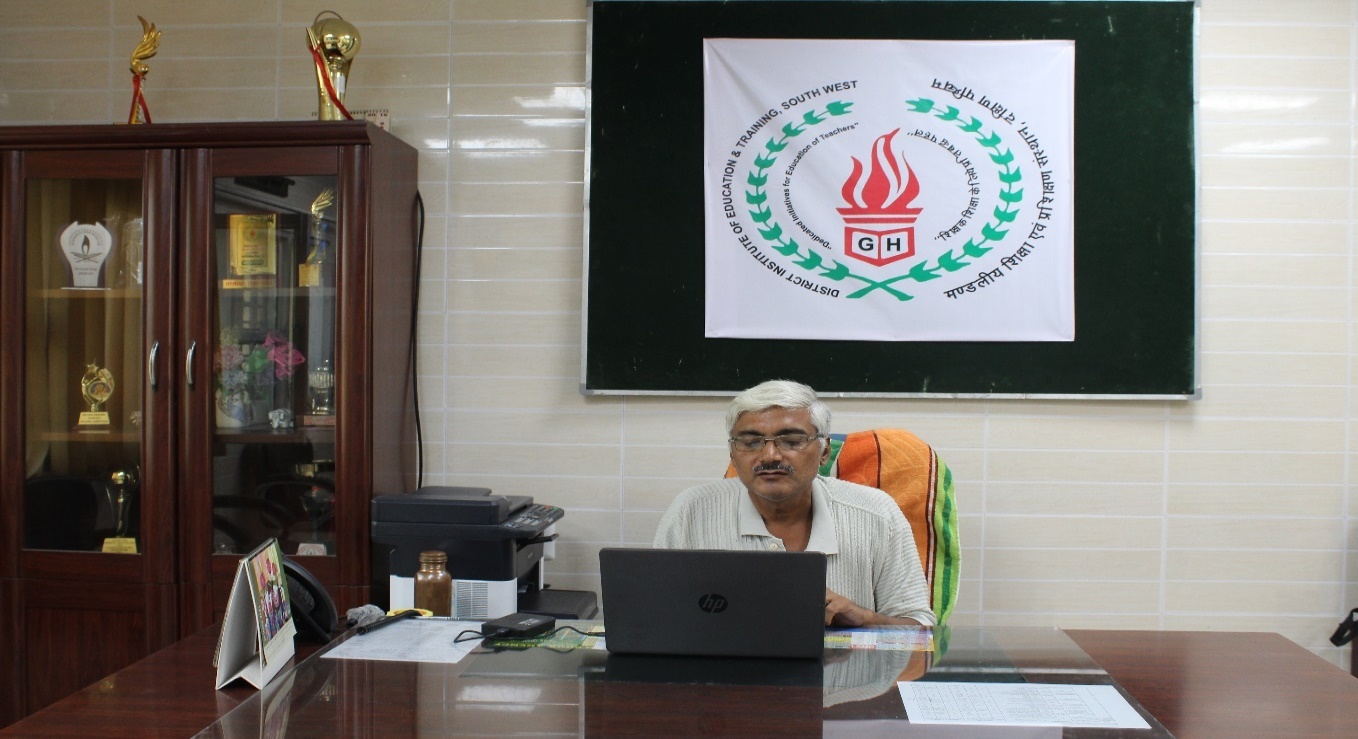DIET Ghumanhera has been established as a pace setting institution with the objective to bring qualitative and quantitative enrichment in elementary education in the District South West-B, through conducting research, experiments, training, developing materials and providing resource support. Since its establishment, DIET Ghumanhera is constantly engaged in achieving these objectives.
This is an institute that captures the multi-faceted personality of the elementary education visionaries. The institute performs a wide range of academic activities with the idea of development of a complete personality, self-discipline, spirit of co-operation, innovative ideas, scientific temper and missionary zeal which are the necessary part of studies. The institute run 2 year D.El.ED Programme with the in-take of 150 students.
VISION:
To inspire the human spirit through outstanding achievements in teacher education, research and citizenship in a creative community, building one of the India’s great DIETs for the public good.
MISSION:
Within a vibrant and supportive learning environment, DIET, Ghumanhera discovers, disseminates and applies new knowledge through teaching and learning, research and creative activity, community involvement and partnerships.
OBJECTIVES:
- To raise the quality of school education by improving the attitudes, increasing the application of knowledge, and enhancing the teaching skills of teachers.
- To generate new knowledge by engaging in cutting-edge research and to promote academic growth by offering state-of-the-art educational training programs.
- To identify, based on an informed perception of Indian, regional and global needs, areas of specialization upon which the institute can concentrate.
INFRASTRUCTURE AND RESOURCES:

Campus Area: 2 Acres
Built-Up Area: 2835.48 Square Meters
Facilities:
| Playground | Auditorium | Library | Laboratory | Computer Lab |
| Theatre | Conference Hall | Health Center | Fitness Center | Campus Friendly |
| Common Room | Cafeteria | Separate rooms for Girls | National Knowledge Network Connectivity | Books Journals |
| Grievance Redressal Mechanism | Vigilance cell | Sexual Harassment Cell | Counsellors For Students | Clinic/First Aid Room |
| Anti-Ragging Cell | Skill Development Center | Self Defence Class For Females | Opportunity cell | NME-ICT Connectivity |
ORGANIZATION STRUCTURE:

District at a Glance District South West–B has two zones, XXI & XXII, under Directorate of Education, GNCT of Delhi. The Deputy Director of Education (DDE) is the District Head and Education Officers are the Zonal Heads of their respective zones. Apart from Government schools, there are Government-aided and Unaided/ recognized schools under DOE. A yearly calendar duly approved by Programme Advisory Committee (PAC) is designed every year to ensure planned work in the area of training, research, material development, and conducting programmes in an organized and systematic manner. EDUCATIONAL STATISTICS – MCD (SOUTH WEST – B) Number of Primary Schools
| Zone | Girls | Boys | Co.ed | Total |
| 21 NAJAFGARH | 22 | 22 | 21 | 63 |
| 22 NAJAFGARH | 18 | 18 | 32 | 68 |
Strength of Staff:
| Zone | Principal | Primary Teachers |
| 21 NAJAFGARH | 51 | 988 |
| 22 NAJAFGARH | 43 | 557 |
EDUCATIONAL STATISTICS - DISTRICT SOUTH WEST – B (DOE) Number of Schools Zone -wise:
| Type of School | Zone-21 | Zone-22 | Total |
| RPVV | 3 | 0 | 3 |
| Sarvodaya | 19 | 13 | 32 |
| Govt. | 34 | 35 | 69 |
| School of Excellence | 1 | 0 | 1 |
| Total | 57 | 48 | 105 |
Number of Schools (Level –wise)
| Level | Zone-21 | Zone-22 | Total |
| Middle | 0 | 0 | 0 |
| Secondary | 3 | 2 | 5 |
| Sr.Sec. | 43 | 46 | 89 |
| Total | 46 | 48 | 94 |
Number of Teachers of Govt. Schools (DOE Category wise)
| Number of Teachers | PGT | TGT | Primary Teachers |
| 1237 | 2858 | 347 |
DISTRICT AT A GLANCE:
- Actual Population (2011 census): 2,292,958
- Male: 1,249,295
- Female: 1,043,663
- Population Growth: 30.62%
- Area Sq.Km: 421
- Density/Km2: 5,445
- Proportion to Delhi Population 12.67%
- Sex Ratio (Per 1000): 836
- Literacy 88.81
- Male Literacy 93.62
- Female Literacy 83.07
- Total Child Population (0-6 Age) 262,815
- Male Population (0-6 Age) 143,112
- Female Population (0-6 Age) 119,703
- Total Literates 1,802,505
- Male Literates 1,035,011
- Female literates 767,494
- Child ratio (0-6 Age) 11.46%
- Boys Proportion (0-6) 11.46%
- Girls Proportion (0-6 Age) 11.47%


 State Council of Educational Research and Training (SCERT)
State Council of Educational Research and Training (SCERT) 


